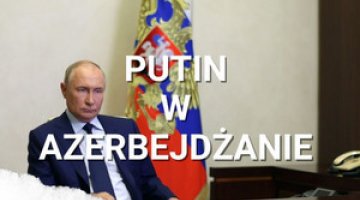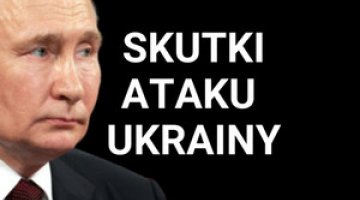Preparations for the battle of Kherson. 235th day of the war

The heaviest fighting occurs in the Bakhmut area and Soledar, located northeast of Bakhmut. According to some sources, Ukrainian forces have begun pulling reserves into the city to reinforce defences. Russian troops were to continue to apply pressure on the line of the Zherebets River in the northeastern part of Donetsk Oblast, stopping attempts by the defenders to cross it. Ukrainian units were to repel attacks southeast of Siversk, on the north-western outskirts of Horlivka and in an arc west of Donetsk. In the Kherson Oblast (according to unofficial sources), the Ukrainians made unsuccessful attempts to attack the Russian defence line between Davydiv Brid and Dudchany.
The Russians continue to launch missile and drone strikes, targeting mainly energy infrastructure. On the morning of 17 October, Kyiv was hit by five kamikaze drones. Dmytrivka in the Kyiv Oblast, Kharkiv, Mykolaiv, Odesa and Zaporizhzhia were also attacked. Energy infrastructure facilities were also hit in Dnipropetrovsk and Sumy oblasts. Most drones and some missiles were shot down.
Russian artillery and aviation continue to strike Ukrainian army positions and facilities along the line of contact and in the border areas of Chernihiv and Sumy oblasts. Nikopol and its surroundings are under constant attack, while Orikhiv in Zaporizhzhia Oblast and Bakhmut are on the front line. Kostiantynivka in the Donetsk Oblast and the port infrastructure of Ochakiv were also targeted. The Ukrainian side mainly attacked positions and facilities of Russian forces in Kherson and Luhansk oblasts, and in recent days has also increased the intensity of shelling and bombardment in Zaporizhzhia Oblast. Defender forces have also shelled Russian administration buildings in Donetsk. Ukrainian acts of diversion were once again reported in the Melitopol airport area and around Berdiansk.
On 17 October, European Union foreign ministers officially decided to launch the EU Military Assistance Mission, costing €100 million over two years. It will deal with the training of nearly 15,000 Ukrainian soldiers (12,000 in the basic course and 2,800 specialists). Germany has declared that 5,000 servicemen will receive training on its territory (the remaining 10,000 – most likely in Poland). Two days earlier, President Emmanuel Macron approved a plan to train 2 000 Ukrainian soldiers in France. The head of the French defence ministry, Sébastien Lecornu, further confirmed the transfer of Crotale anti-aircraft systems. Their first battery could be sent to Ukraine within two months once the training process has been completed.
The new (23rd since August 2021) US military aid package worth $725 million will include: missiles for HIMARS launchers (including GMLRS guided missiles); 23,000 155 mm artillery munitions; 500 155 mm precision munitions (most likely М982 Excalibur); 5,000 155 mm anti-tank loaded Remote Anti-Armor Mine (RAAM) cluster shells; 5,000 anti-tank weapons; AGM-88 HARM anti-radiation missiles; over 200 HMMWVs. Germany has donated 16 Biber tank bridges (on a Leopard 1 tank chassis) to Ukraine. At the same time, Norway intends to purchase 17,000 pieces of post-Soviet artillery ammunition of 122 mm and 152 mm calibres (the source of the ammunition was not indicated).
According to Ukrainian Defence Minister Oleksii Reznikov, Russia has used more than two-thirds of its ballistic and cruise missiles in Ukraine. On 24 February, it was said to have a total of 1,844 missiles at its disposal (900 Iskander system ground-based, 500 Kalibr type sea-based and 444 Kh-101 and Kh-555 types air-based). By contrast, on 12 October, they were to have 609 missiles in their arsenal (124 of the Iskander system, 272 of the Kalibr type and 213 of the Kh-101 and Kh-555 types). The Russians were also supposed to have nearly 300 Iranian kamikaze drones remaining. The statement prepared by the Ukrainian defence ministry did not consider other types of missiles in use by the Russian army, mainly cruise missiles (more than a dozen types in total), and possible production after 24 February.
On 16 October, the Ukrainian General Staff confirmed that the activity of Ukrainian forces in the south of the country had caused the Russians to begin evacuating administration personnel and property from Kherson to Crimea. On 13 October, collaborationist representatives of the annexed part of Kherson Oblasts reported that the Ukrainian Armed Forces had launched an offensive on Kherson. They requested Moscow’s assistance in organising the evacuation of the population. According to a representative of the so-called Luhansk People’s Militia, Ukrainian troops are preparing an offensive towards Kreminna and Svatove, which is expected to take place on 18–20 October.
The first Russian troops forming part of the Regional Military Grouping of the Russian Federation and the Republic of Belarus, which has been under development since 9 October, are being transported to Belarus. The Belarusian defence ministry said that the Russian component will comprise about 9,000 troops equipped with about 170 tanks, up to 200 infantry fighting vehicles and up to 100 guns and mortars. The ministry has not revealed what type of units will be deployed. However, based on the number of servicemen given, it can be assumed that there will be the development of a grouping equivalent to at least two brigades or, depending on the potential of the security subdivisions, land army regiments, and that the air force will be reinforced (including troops equipped with combat drones). Russian troops continue to benefit from material support from Belarus. At least 67 T-72A tanks have been exported to Russia from depots there since 11 October.
On 15 October, the deputy head of the Russian delegation to the UN, Konstantin Vorontsov, announced that Russia intends to transfer Iskander-M missile complexes with dual launchers to Belarus and is considering adapting Belarusian Su-25 aircraft to carry nuclear weapons. He justified the decision on the grounds of the possible ejection of NATO’s nuclear infrastructure to the east and the intentions of Poland, which ‘for several years has declared its willingness to become fully involved in nuclear missions’. He added that at present, ‘there are no plans either to equip Belarusian systems with nuclear warheads or to move such warheads to Belarus’.
On 14 October, Alyaksandr Lukashenka confirmed the announcement of an ‘anti-terrorist operation’ in Belarus. One of its effects is the militarisation of the Ministry for Emergency Situations staff. Some staff have been equipped with firearms, training is being provided in case hostilities begin, and plans are being made to evacuate the population from areas at risk of fighting. According to the Ukrainian border service, the situation on the border with Belarus remains tense. However, there has been no change in the nature of the actions of the neighbour’s units deployed along it.
On 15 October, Vladimir Putin announced that partial mobilisation in the country would be completed by the end of October, and that since 21 September, 222,000 people out of a target of 300,000 had managed to register. Some 33,000 of those mobilised are already in military units, and 16,000 have been sent to the front. The Russian president dismissed the possibility of declaring a general mobilisation and criticised the ‘stupidity’ of the military authorities, which had incompetently proceeded to carry out the measures planned in this regard, using outdated databases for this purpose.
Referring to Putin’s words about the course of mobilisation, Commander of the Combined Armed Forces of Ukraine Serhiy Nayev stated that new units would be formed, with the help of which regrouping and preparation for an offensive operation could be carried out. He estimated that the available Russian mobilisation resource is about 2 million people who have recently been released from military service and participated in periodic training. In contrast, he estimated the total Russian mobilisation reserve at around 29 million people.
There are further reports from Russia of problems in implementing the mobilisation plan. In Saratov, some mobilised people are sent to the front without prior training. Those called up are being held for several days under guard in railway depots. Deficiencies in the essential equipment of soldiers are being signalled – there is a shortage of helmets and bulletproof vests. The soldiers are expected to buy sleeping bags and winter clothing items with their own money. On 15 October, a shooting occurred at one of the training grounds of the Western Military District, where 11 people were killed and 15 wounded. The circumstances of the incident testify to the insufficient vetting of those called up for service, their unsatisfactory mental condition and the poor state of discipline in the training camps (e.g. the emergence of nationality conflicts or signs of rebellion against being sent to the front).
Commentary
- There is increasing information in the messages from both sides about further offensive activities of the Ukrainian Armed Forces to start or intensify shortly. The most important of these is expected to be the recapture of Kherson and the expulsion of the aggressor’s troops from the right bank of the Dnieper. The evacuation initiated by the Russians evidences the preparation of both sides for such a solution. However, the actions taken by the occupying power do not prejudge the planned abandonment of the right bank part of Ukraine. It must be assumed that the Russians want to minimise the civilian use of the sites and means of crossing the Dnieper, which will be crucial to maintaining communications with the hinterland in a battle for Kherson. In favour of an imminent attack by Ukrainian troops are the progressive increase in the aggressor’s grouping potential (even considering the poor preparation of the newly mobilised troops headed to the Kherson Oblast) and the approaching autumn and winter season, which will favour the invading forces.
- The progress to date in developing the Belarusian-Russian military grouping indicates that this is a demonstration of force to maintain a state of tension on the border not only with Ukraine but also with Poland, Lithuania and Latvia. Belarusian military officials emphasise that the entry of Russian troops is allegedly due to the growing threat from NATO to the military security of the Republic of Belarus and the Union State, so that the potential for defending the border must be increased ‘in order to limit military activity on the territories of countries bordering Belarus’. The declared number of Russian troops in Belarus is currently too small for them – without the support of Belarusian forces – to be used to implement a new full-scale offensive to the north of Ukraine. One may expect the Russians to continue air attacks from Belarus on a larger scale.
- It is likely that the Russians, with Belarusian support, will decide to provoke incidents in the border region, thus forcing Kyiv to increase its defensive capabilities on the northern section of the border. The grouping could also be used for operations in Ukraine in the event of an unfavourable outcome of the battle for Kherson for the aggressor. In such a case, its objective would not be to seize a specific piece of territory in the north of the country but to engage Ukrainian army units so they could not provide support in the south.
- Vorontsov’s information about the contemplated adaptation of the Belarusian Air Force’s Su-25 attack aircraft to carry tactical nuclear weapons should be regarded as another element of Russian psychological warfare. Su-25s are one of the few types of combat aircraft in the aviation of post-Soviet states not adapted to carry tactical nuclear weapons due to the nature of the tasks carried out by assault aviation. If Moscow decides to transfer tactical nuclear payloads to Moscow, the Su-30SM multirole combat aircraft introduced into service in Belarusian aviation in recent years could be used to carry them – without the need for design changes.
- Putin’s statement about the imminent completion of partial mobilisation does not prejudge its actual scale. Information from Russia about organisational problems related to the poor preparation of the mobilised or even their lack of training before being sent to the front testifies to the great haste in replenishing the losses incurred. Repeated reports of deficiencies in soldiers’ essential equipment, poor conditions in the barracks, and incidents of poor discipline indicate that most replenishments will not have much combat capability. Sending ill-prepared soldiers to the front will cause an increase in Russian losses and make it difficult to carry out an effective large-scale offensive operation.





